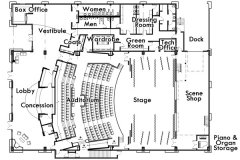 Frame[work]
Frame[work]
Post title...
Performance
I saw the film Carnage last night. It is worth mentioning in this blog not because it was good (though I wouldn't say it was bad) or because I liked it, but because it told a story in a very interesting way.
The story: Carnage is about a fight between two boys. You never see these two individuals beyond the intro and outro of the movie, though, instead they are developed as characters through their parents. What is most interesting about their development is the shifts of parental perspective; at times they are defended, cherished, and admired, but they are also at times revealed to be terrors, monsters, soul-sucking parasites. What the real story ends up being about is the faces we put on as adults that we believe so dearly are our true, civilized selves, but which, given enough time and alcohol, fall away to reveal the childish needs and desires we still carry.
The telling: This is a play. Everything about it is a play, from the location (one room) to the plot (character-centric) to the delivery (projected voices). The dialogue is heavy, with each line hammering home an element of the speaker's personality. Penelope (Jodie Foster), constantly dripping with morality, judgement, and desperation. Michael (John C. Riley), the accommodator. The props are overly meaningful and each character is drawn to them like a moth to a flame. Tulips find themselves embodying roles of politeness and convention ("what lovely tulips"), power and destruction (dropping a cell phone into the vase), and eventually carnage (being flung around the room). Books serve to bond the two female characters at first, only to tear them apart in the end. Cobbler finds itself being ingested and spewed back out, both physically (thrown up onto aforementioned books) and metaphorically ("delicious" while being eaten, but "horrible" in the secrecy of a private conversation).
The story is as much a traversal through interactions with physical objects as it is a narrative about two boys.



 Magazine Posts
Magazine Posts Table of Contents
Table of Contents